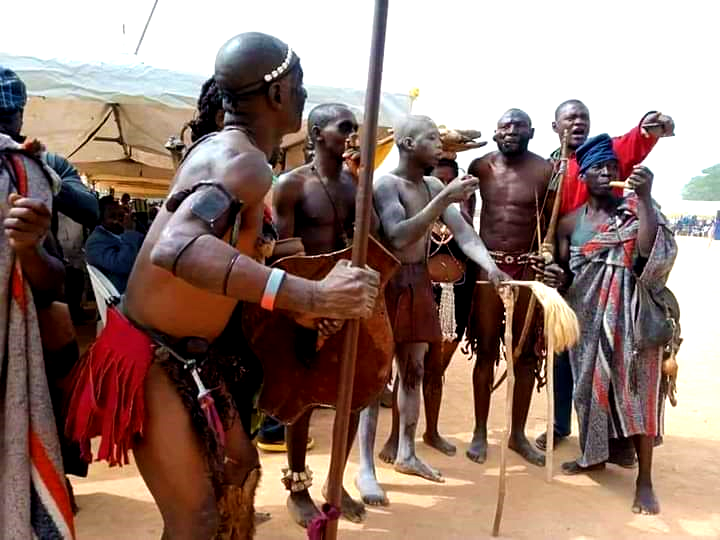The indirect rule of Col. Frederick John Dealtry Lugard didn’t thrive in Southern Kaduna. This is because the area had no central authority. The different ethnic groups owed their allegiance to their respective traditional chiefs. Every clan had traditional ruler from whom power flows. The colonial administration didn’t find this system favorable, so they imposed the Sarauta system of the Zegzeg, which was central and more favorable, on southern Kaduna to ease their mission. All traditional chiefs were brought under control by an Emir overseeing that province.
With this territorial regrouping, a Fulbe man was sent on an expedition to the land of Kagoro to deliver the message; that the area known as Kagoro had been removed from Zango District and annexed to Jema’a District. A woman who listened to him deliver the message didn’t allow any moment for deliberations. She drew out a sword and beheaded him instantly, and they went to war against Jema’a District in 1903 until the Colonial administration rescinded its decision and administered Kagoro separately.
When the colonialist arrived Moroa, the Agwam Asholio, Duya, asked the clan head of Aswa, Akut and his son Shekari, to meet with the colonialist. He then withdrew to Takwat, which was the sacred place where the Asholio chiefs were given investiture of office. This is in line with cultural practice knowing what the colonialist mission was. It signifies rejection. The colonialist attempted three times with utter futility. Frustrated with Duya, they then made the Head of Aswa Clan the Agwam Asholio and cut off Duya and his clan from the chieftain without recourse to the traditional royal kinship. It was the stock in trade of the colonialist to destabilize and divide to conquer traditional institutions.
The Moroa people refused to recognize the colonialist until they transferred the chieftain from the Abuwat Clan to the Aswa Clan.
In Agworok, the people withdrew into the hills and behind their cactus hedges. From there they put up a strong fight against the British colonialist using bows and arrows and rolled stones and bees down unto the colonialist. They rejected the tax system introduced to them by the British colonialist. Frustrated here by the resistance, the colonialist invaded the Atakad, Aninka, Agworok and Mada area in 1909, using 107 rank and files of the West African Frontier Force (WAFF), one Non Commission Officer ( NCO), 2 officers and maxim gun. Although 71 resistance fighters were killed, the resistance fighters killed six WAFF officers and wounded five carriers.
In Kaingi town, freshly poisoned arrows were fired at the colonialist by the inhabitants. The colonialist guns overpowered the inhabitants, leading to the destruction of their arsenal of arrows. 40 people were taken as prisoners and two horses carted away by the colonialist.
At Gada, 6 horses and 60 prisoners were taken away by the colonialist after hours of fierce battle.
The Bajju people put up a violent resistance against the colonialist. When the colonialist approached Kankada, (present day Awadon), the natives refused to retreat, forcing the Colonial troop to split into two. Fatigue began to set in among the natives after hours of fierce battle. The colonial guns overpowered the tiring resistance fighters until they eventually dispersed and fled into the bushes. They colonialist burnt down the town of Madakiya after the inhabitants had fled to Kachim. When the colonialist crossed the town of Zonkwa, after the inhabitants had fled to the bushes launching a guerrilla warfare, two soldiers, named Maude and Sergeant Major Bullah narrowly escaped death after being ambushed around Fadia, forcing the colonial troop to station an overnight patrol around the area.
The Village Head of Kachib, Mallam Makoshi could not collect the tax from the areas under his domain. So the Emir of Jema’a was on a tour of Kachib, Afana and Bakin Kogi to collect tax arrears in 1914. When he set out for Aninka area, the Ningkwop and Bajju people launched an attack on the Emir at Ayu, killing him in the process. Consequently, 60 soldiers with maxim guns were sent to met out collective punishment to the Aninka. A successor Emir was installed. Undetered, the Ningkwop and Bajju people again chased him out into hiding until he was recalled back to Zaria. The colonial troop sent to control the situation were shot and the people refused to cooperate in identifying the culprits. Frustrated again, the colonialist launched a decisive war against the people they were determined to colonize.
SOURCE: drbiggie.wordpress.com/Aduloju Olurotimi David
IMAGE: dr.biggie.wordpress.com



